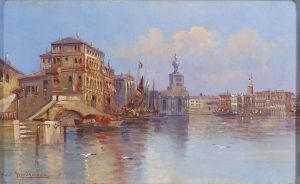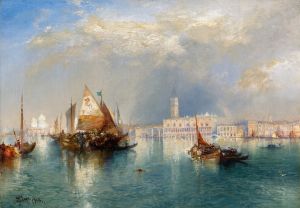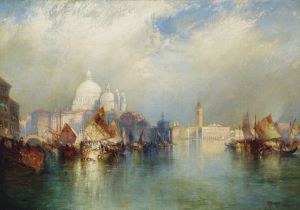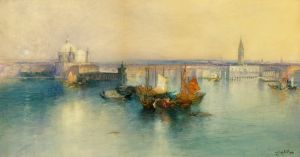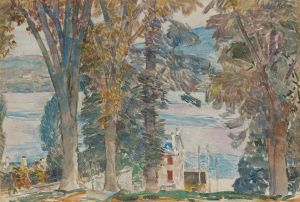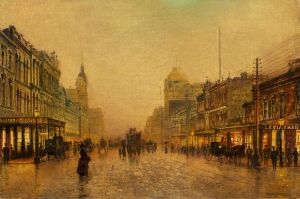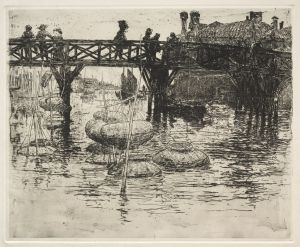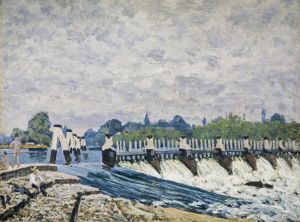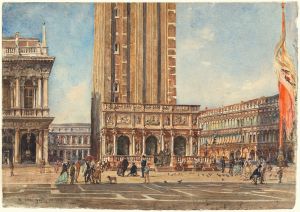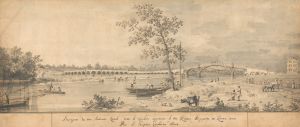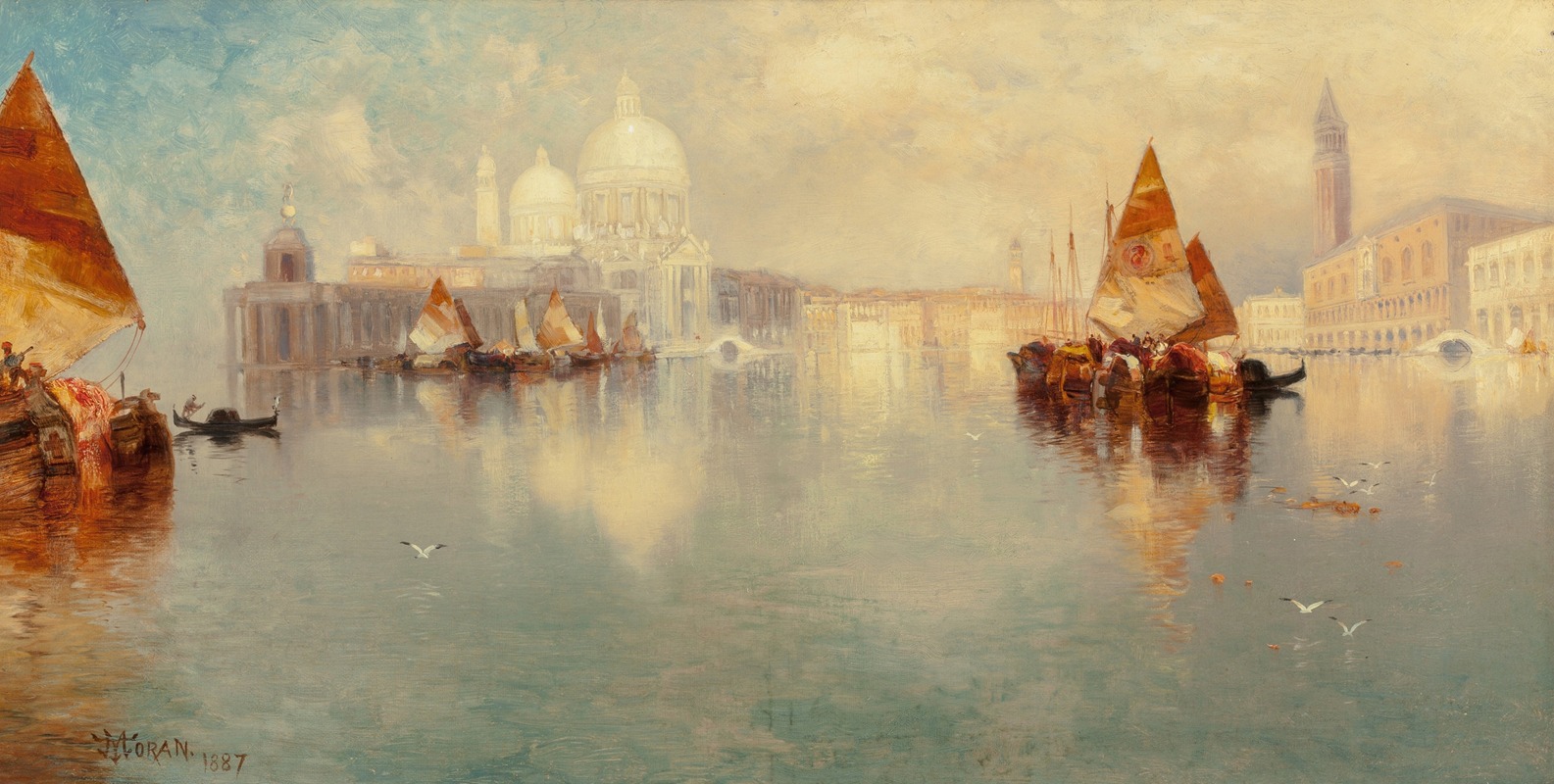
Venice
A hand-painted replica of Thomas Moran’s masterpiece Venice, meticulously crafted by professional artists to capture the true essence of the original. Each piece is created with museum-quality canvas and rare mineral pigments, carefully painted by experienced artists with delicate brushstrokes and rich, layered colors to perfectly recreate the texture of the original artwork. Unlike machine-printed reproductions, this hand-painted version brings the painting to life, infused with the artist’s emotions and skill in every stroke. Whether for personal collection or home decoration, it instantly elevates the artistic atmosphere of any space.
"Venice" by Thomas Moran is a captivating painting that showcases the artist's fascination with the city of Venice, Italy. Thomas Moran, an American painter born in 1837, is best known for his landscapes of the American West, particularly those of Yellowstone and the Grand Canyon. However, his artistic repertoire also includes a number of European scenes, with Venice being a recurring subject.
Moran's "Venice" captures the ethereal beauty and architectural grandeur of the city, reflecting his skill in rendering light and atmosphere. The painting is characterized by its vibrant colors and meticulous attention to detail, which are hallmarks of Moran's style. His use of light creates a luminous quality that enhances the romantic and timeless appeal of Venice. The composition typically includes iconic Venetian landmarks such as the Grand Canal, St. Mark's Basilica, and the Doge's Palace, although specific details may vary across different works titled "Venice."
Moran's interest in Venice was part of a broader trend among 19th-century artists who were drawn to the city's picturesque scenery and rich cultural history. Venice, with its unique network of canals and historic architecture, provided an endless source of inspiration for artists seeking to capture its charm and mystery. Moran's depictions of Venice are not merely topographical; they convey a sense of the city's atmosphere and the interplay of light and water that defines its landscape.
The painting reflects Moran's ability to blend realism with a touch of the sublime, a skill he honed during his travels and studies. Although primarily associated with the Hudson River School, Moran's work also shows the influence of the Luminism movement, which emphasized clarity of light and a tranquil, almost spiritual quality in landscape painting. This influence is evident in his Venetian scenes, where the play of light on water and architecture creates a serene and almost dreamlike effect.
Moran's "Venice" paintings were well-received during his lifetime and continue to be appreciated for their artistic merit and historical significance. They offer a glimpse into the 19th-century American perspective on European culture and the enduring allure of Venice as a subject for artists. Today, Moran's works can be found in various art museums and collections, where they continue to captivate audiences with their beauty and technical mastery.
In summary, Thomas Moran's "Venice" is a testament to his artistic versatility and his ability to capture the essence of a place. Through his skillful use of color, light, and composition, Moran brings the enchanting city of Venice to life, offering viewers a window into its timeless beauty.





